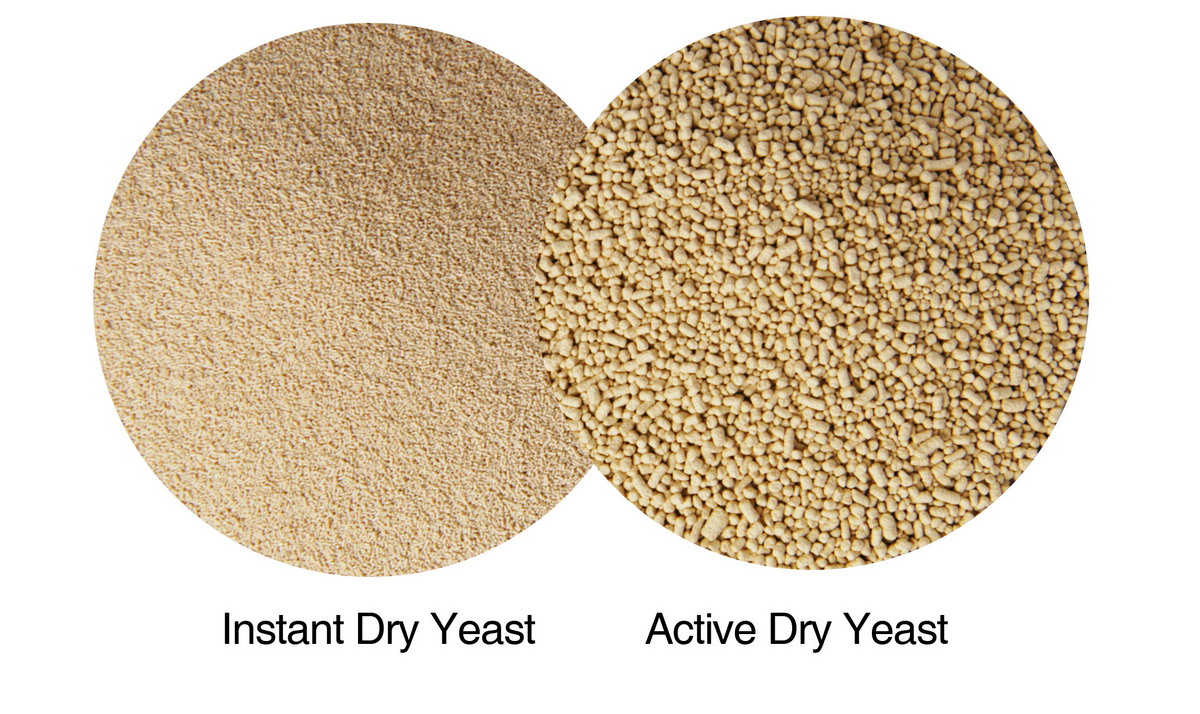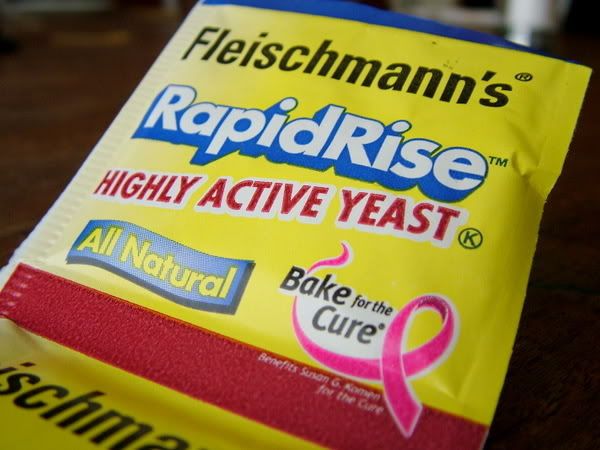I've had a question! Intrepid Apple reader Melliflua wants to know what is meant by "fast-acting" yeast.
I don't have any context for this question -- is Melliflua making bread and wants to know whether one kind of yeast that doesn't say "fast-acting" will work just as well? -- only that she wonders what it is. She doesn't want a whole Apple per se, just wondering.
So, in the spirit of doing entries more often, but keeping them shorter, I won't get into the long-standing mystery that is yeast. I'll just give you the 3 varieties that are typically sold in stores today and tell you how they're different.

Yeast -- but what kind?
(Photo from Red Star Yeast)

Fresh yeast is sold in compressed blocks like this. Looks like tofu or tuna or anyway not so appetizing. If you're a commercial baker or especially Martha-Stewart-particular, you may go with this type.
(Photo from Big Black Dogs)



These are all the same type of yeast:



How's that, Melliflua? Did I answer your question?
I don't have any context for this question -- is Melliflua making bread and wants to know whether one kind of yeast that doesn't say "fast-acting" will work just as well? -- only that she wonders what it is. She doesn't want a whole Apple per se, just wondering.
So, in the spirit of doing entries more often, but keeping them shorter, I won't get into the long-standing mystery that is yeast. I'll just give you the 3 varieties that are typically sold in stores today and tell you how they're different.

Yeast -- but what kind?
(Photo from Red Star Yeast)
Fresh or Wet Yeast
- Comes in a solid, compressed form like a cake
- Preferred by commercial bakers
- Will only last a couple days refrigerated
- Can last up to 3 months in the freezer. Defrost when ready to bake & use a little extra
- 1 cube fresh yeast = 1 envelope of active dry yeast or 1-1/2 tsp to 2 tsp instant yeast
- If the recipe calls for dry yeast and you have fresh, use 2x the amount

Fresh yeast is sold in compressed blocks like this. Looks like tofu or tuna or anyway not so appetizing. If you're a commercial baker or especially Martha-Stewart-particular, you may go with this type.
(Photo from Big Black Dogs)
Active Dry Yeast
- Granular, similar to the consistency of cornmeal
- Store in a cool, dry place until the "best before" day on the package. Outdated yeast won't rise.
- Needs to be dissolved in warm water to get the yeast going.
- Adding some sugar to feed the yeast -- honey or granulated sugar -- will speed things along. But if the recipe doesn't tell you to do this, it's probably best not to.
- That said, adding sugar is a way to test or "proof" the yeast to make sure it's still active. Most packaged yeasts with a "best buy" date don't need to be proofed; you can trust the date.
- After adding water & maybe sugar, let stand 5-10 minutes until bubbles form and it expands to about 2x its size
- Will provide 2 rises -- once after kneading, and again after shaping
- 1 envelope active dry = 2-1/4 tsp = 1/4 ounce
- If the recipe calls for fresh yeast and you have active dry, use 1/2 the amount
- If a recipe calls for Rapid Rise, and you have active dry, don't use it; get Rapid Rise instead.

Active dry yeast, out of the package
(Photo by Donna Turner Rulman)

A typical envelope of Active dry yeast

Here's a good depiction of the difference between Active Dry and Instant/Fast-Acting/Rapid Rise/Bread Machine Yeast
(Photo from Angel Yeast)
Fast-Acting or Instant or Rapid Rise or Bread Machine Yeast
- All these terms mean the same thing.
- Slightly different strain of yeast than Active dry
- Also granular, but particles are very fine
- Since the particles are so small, there's no need to dissolve the yeast in warm water first. You can add it directly to your recipe. Hence the "instant" or "fast-acting" or "rapid rise" etc.
- Store in a cool, dry place until the "best before" day on the package. Outdated yeast won't rise.
- Will provide 2 rises -- once after kneading, and again after shaping
- 1 envelope instant/fast-acting/rapid rise = 2 1/4 tsp = 1/4 ounce
- If the recipe calls for fresh yeast and you have this kind, use 1/4 the amount
- If a recipe calls for Active Dry and you have Rapid Rise, use slightly more and cut the rise time in half.
These are all the same type of yeast:

(Photo from What Is Cooking Now)

(Photo from The Kitchn [not a typo])

(Photo from Baking Ways)
How's that, Melliflua? Did I answer your question?
Sources
Nigella Lawson's Kitchen Queries, Different Kinds of Yeast
The Kitchn [not a typo], What's the Difference? Instant, Active Dry, and Rapid-Rise Yeasts
Fleischmann's Breadworld, Active Dry Yeast vs. Rapid Rise Yeast and Frequently Asked Questions
Pillsbury, All About Yeast Breads
What's Cooking America, How to Use Yeast in Bread Making)

Yes, and I was COMPLETELY WRONG in my supposition. For some reason, i thought the fast-acting yeast meant it would rise faster. Thank you, you beautiful Apple Lady. You're a Honey Crisp.
ReplyDelete